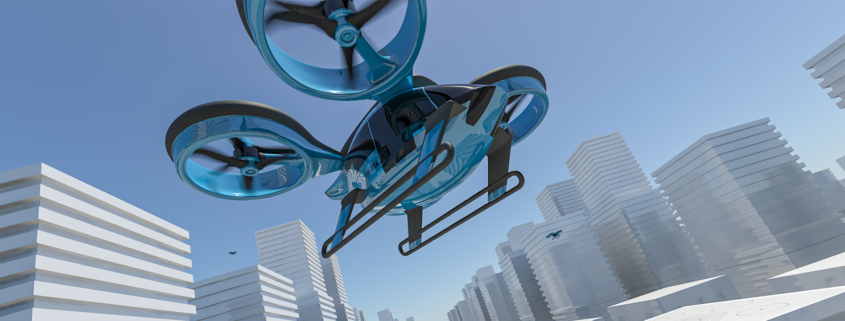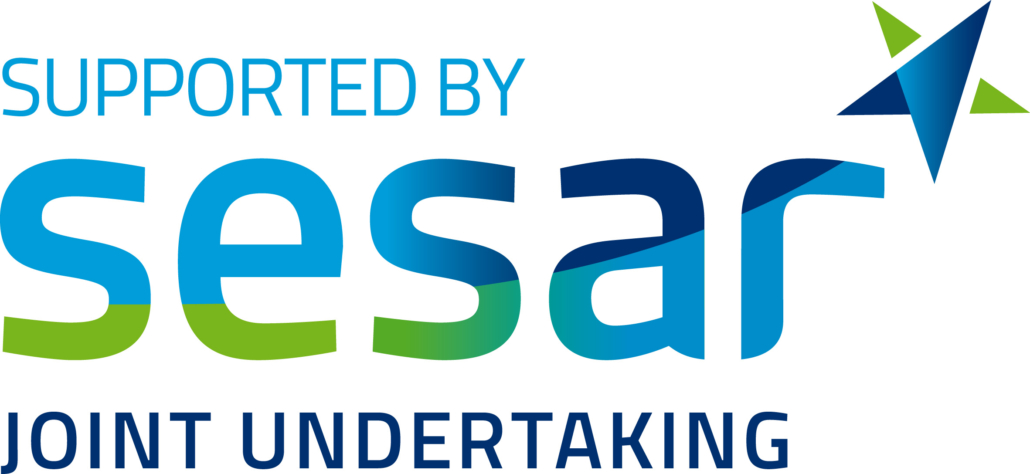In just a few years, urban air mobility will be a reality, letting people travel conveniently in a way more suited to cities and their residents. Integrating these big future drones safely into our urban airspace requires a lot of coordination and a great deal of testing. Within the next few months, the European project AMU-LED will carry out several demonstration flights in urban environments in the United Kingdom, the Netherlands and Spain. What if the future were to have ambulances transporting patients and critical medicines by air? What if firefighters could tackle fires safely and efficiently without putting human lives in danger? A future where people can travel faster and more efficiently from point to point, with better and optimised services for cities and their residents. That future is not a mere vision – it is a reality that will come to us in a matter of years: Urban Air Mobility (UAM). UAM is a transformational mobility concept for urban areas, using various types of drones to perform any type of mission that aims to improve the welfare of individuals and organisations. U-space Scenarios in urban environments In these demos, the project will use large electrical Vertical Take-off and Landing (eVTOL) platforms for passenger and cargo transport, combined with smaller Unmanned Aerial Systems (UAS) performing delivery of goods and medical supplies, surveillance or support for emergency services. Objectives of AMU-LED “After having carried out an impressive amount of work, where our consortium devised and implemented cutting edge concepts of operations for UAM, prepared futuristic yet round the corner use cases such as air commute shuttle or last-mile parcel delivery, and integrated innovative unmanned traffic management services, at last we are ready for take-off”, clarifies Pablo Menéndez-Ponte Alonso, project leader UTM of NTT DATA Spain that coordinates the European consortium of 17 different enitities that take part in the AMU-LED project. “Cranfield is our first although essential demonstration, as it will allow us to understand the readiness of this technology by confronting the actual challenge.” Eventually there will be seven demonstrations in total, taking place throughout summer of 2022, in Cranfield (UK), Amsterdam (NL), Enschede (NL), Rotterdam (NL), and Santiago de Compostela (SP). Exchange of information The information to be exchanged concerns all kinds of data, e.g. strategic and tactical information prior to and during the flight, tracking data (real-time information about the position of the drone), advisory tactical deconfliction service (information to avoid any conflicts prior to the flight and during the flight), and weather and CNS (Communication, Navigation and Surveillance) data. What can be expected during the demonstrations? In June the demonstrations start with the feasibility case in Cranfield, proving the readiness of the AMU-LED solution, technologies, and systems. These tests are led by Cranfield University, and will take place at Cranfield Airport, a unique facility which has its own Air Navigation Service Provider and air traffic controllers, and its own pilots and aircraft. This demonstration will be a prerequisite for the subsequent demonstrations, proving that the AMU-LED solution is ready and safe to be tested in more complex environments. A second part of the Cranfield demonstration will take place in September. After proving the feasibility of the AMU-LED solution, in August the project will continue testing the desirability of its solution in Amsterdam and Enschede, focusing on public acceptance and social impact. Enschede will follow, demonstrating the social impact of UAM. Space53, a test and innovation centre for unmanned systems, is in charge of this demonstration, which will take place between the Space53 location at Technology Base and Twente Airport, and the city of Enschede. Showcasing various socially relevant use cases such as medical delivery, firefighting or police surveillance, this demonstration will prove the social impact that UAM will create when implemented. In Rotterdam, the economic viability of UAM will be demonstrated also in August. This test is being coordinated by AirHub and will take place in the port area of the city. It will be done in collaboration with the Port of Rotterdam Authority, which wants to investigate the viability of transporting ships’ crews directly from the vessel to the hotel. Other use cases will be showcased as well, flying different UAVs and VTOL aircraft. The city of Santiago de Compostela will host the final demonstration of AMU-LED, where all the previous aspects – feasibility, viability and desirability – come together in a big final show. Coordinated by the technology centre ITG – Fundación Instituto Tecnológico de Galicia the demonstration will focus on the correct implementation of all the aspects in urban environments, as the final showcase of how U-space can enable Urban Air Mobility. This will be demonstrated in September and in October. Throughout these demonstrations, the project team will gather data about the various aspects being tested, which will then be analysed. This will let the project draw up results for the further development of U-space, providing information about the most efficient way for U-space to enable UAM, providing a safe, effective and viable solution for smart cities.
One of the key enablers for UAM is U-space, an air traffic management framework to enable the safe and secure integration of drones. Just like the air traffic management system for general aircraft, U-space will ensure that drone operations are carried safely and efficiently. However, the system will be more automated than current air traffic control, with less human interaction and the capacity to handle more flights simultaneously. U-space can be defined as a set of specific services and procedures designed to ensure safe and efficient access to airspace for a large number of drones that embody high levels of digitalisation and automation.
A lot of work has been put into developing U-space and UAM through research and innovation projects and technological developments. One of these initiatives is the AMU-LED project – a very large-scale demonstration (VLD) project funded by the SESAR Joint Undertaking under the European Union’s Horizon 2020 research and innovation programme. AMU-LED will demonstrate the safe integration of manned and unmanned aircraft through the deployment of U-space, with the ultimate goal of realising increasingly sustainable smart cities. This will be done by performing flight demonstrations with various scenarios, situations and use cases in urban environments.
The project started two years ago in January 2020 with two main objectives of the project to demonstrate the safe interaction of UAM with other airspace users and to demonstrate safe UAM flight. After thorough preparation the flight demonstrations that will take place within AMU-LED can be considered as the final product of the project, putting into practice the concept of operations, use cases, scenarios, system architecture and the U-space system that will be defined in the project.
The variety in locations allows the project to test and demonstrate several relevant aspects in different ways, for instance assessing the most efficient way to exchange information between actors (such as the drones, their pilots and the air traffic management system). The project will test two different concepts for distributing relevant data: a centralised and a decentralised architecture. The decentralised architecture will be tested in Cranfield, Enschede and Rotterdam, and the centralised architecture will be tested in Amsterdam and Santiago de Compostela.
Additionally, as U-space and UAM are still concepts that are under development, AMU-LED followed the three pillars of innovation – feasibility, viability and desirability – to ensure that the demonstrations cover the bases for an effective implementation of UAM.
In Amsterdam, the tests are led by the Royal Netherlands Aerospace Centre (NLR) and will take place in the heart of the city, at the Marineterrein. Using a focus group to gather data, the team will perform various flight demonstrations, testing different aspects of U-space and certain public acceptance indicators such as noise nuisance, perceived safety, trust in the technology, privacy concerns or visual pollution. Mitigation measures for the concerns raised by the focus group will be proposed on the basis of the data gathered.

 Royal NLRNew NLR Vice President Aerospace Operations
Royal NLRNew NLR Vice President Aerospace Operations


